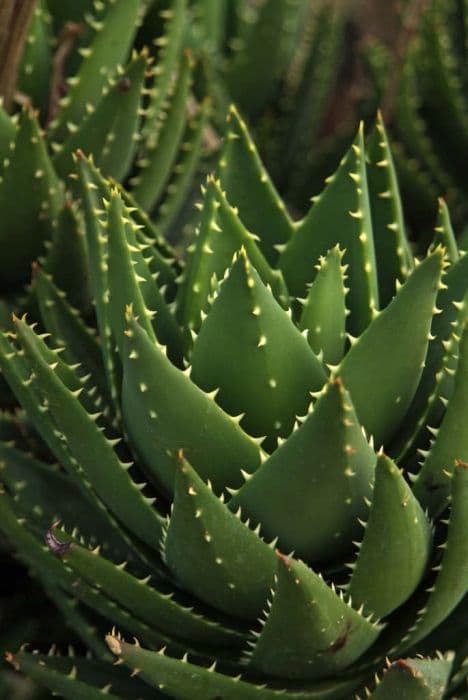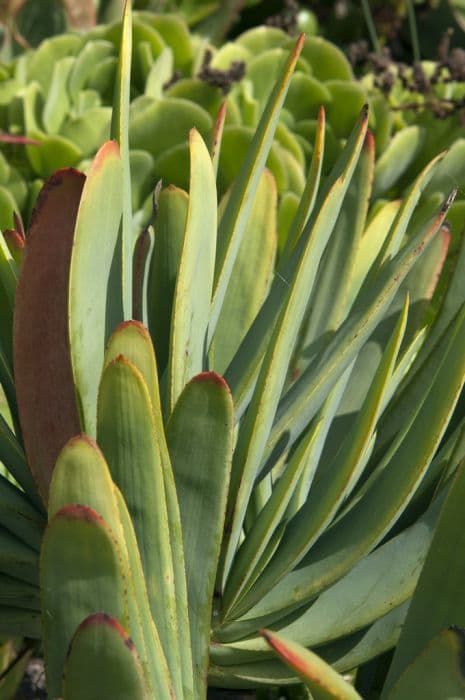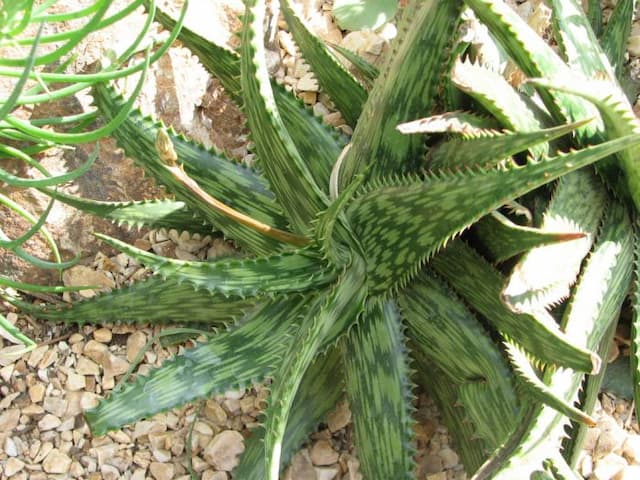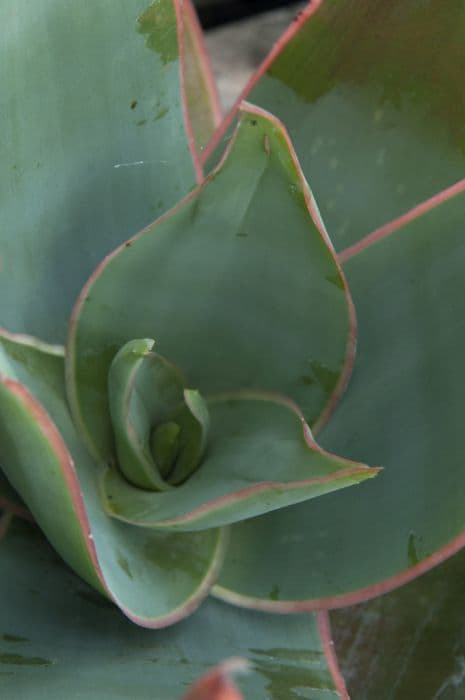Zebra Wart Haworthia reinwardtii
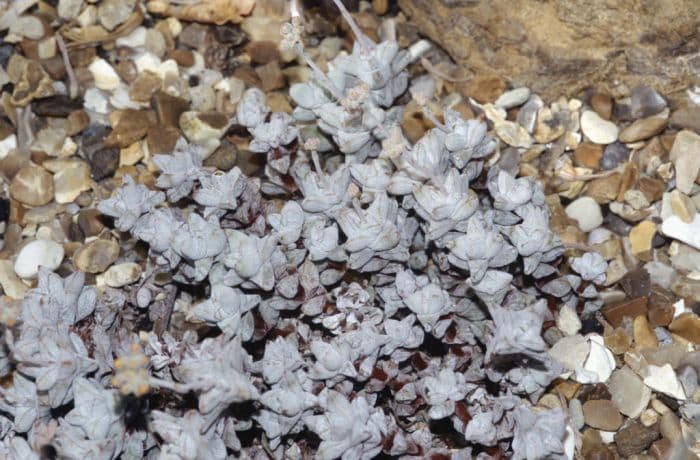
ABOUT
The Haworthia reinwardtii, often known as the Zebra Wart plant, is a succulent with a striking appearance. This small, slow-growing plant is characterized by its rosette of leaves and its ability to form dense clumps over time. The leaves themselves are dark green and exhibit a series of white ridges or bumps, which resemble zebra stripes, hence the common name. The zebra-like texture not only adds to its distinctive look but also helps in differentiating it from other succulent species. Each leaf of the Zebra Wart is fleshy and robust, with a tapering shape and a pointed tip. The plant tends to produce offsets, which are miniature replicas of the parent plant that can grow from the base of the main rosette. These offsets contribute to the dense, clumped appearance of mature plants. The Zebra Wart can also flower, usually producing small, tubular flowers that are not very conspicuous when compared to its dramatic foliage. The combination of the ridged, stripe-patterned leaves and its ability to cluster makes the Zebra Wart a favored choice for succulent enthusiasts and those looking to add an exotic touch to their plant collections.
About this plant
 Names
NamesFamily
Asphodelaceae
Synonyms
Zebra Wart, Cushion Aloe
Common names
Aloe reinwardtii, Apicra reinwardtii, Catevala reinwardtii, Haworthia reinwardtii var. chalumnensis, Haworthia reinwardtii var. kaffirdriftensis, Haworthia reinwardtii var. minor, Haworthia reinwardtii var. olivacea, Haworthia reinwardtii var. pearsonii, Haworthia reinwardtii var. whitehillensis, Haworthia reinwardtii var. zebrina.
 Toxicity
ToxicityTo humans
Zebra cactus is generally considered non-toxic to humans. Ingesting this plant is not expected to cause poisoning or severe adverse health effects. However, as with any non-food plant, individual allergies or sensitivities could potentially cause mild discomfort such as oral irritation or gastrointestinal upset if ingested in significant quantities.
To pets
Zebra cactus is also generally considered non-toxic to pets, including cats and dogs. It's unlikely to cause poisoning if ingested. Nonetheless, as with humans, consumption of non-food plants can potentially lead to mild gastrointestinal upset in some pets. Signs of discomfort may include vomiting or diarrhea, although such reactions are not typically associated with this plant.
 Characteristics
CharacteristicsLife cycle
Perennials
Foliage type
Evergreen
Color of leaves
Green
Flower color
White
Height
0.5 feet (15 cm)
Spread
0.5 feet (15 cm)
Plant type
Succulent
Hardiness zones
10
Native area
Africa
Benefits
 General Benefits
General Benefits- Low maintenance: Haworthia reinwardtii is a hardy plant that requires minimal care, making it ideal for beginners or those with busy lifestyles.
- Drought-tolerant: This succulent is very forgiving when it comes to watering, capable of surviving long periods without water due to its ability to store moisture in its leaves.
- Compact size: Its small size makes it perfect for growing in tight spaces, on windowsills, desks, or as part of terrariums.
- Aesthetic appeal: With its striking zebra-like stripes and rosette shape, it adds a touch of beauty and interest to any indoor plant collection.
- Non-toxic: It is safe for homes with pets and children as it is not known to be toxic when ingested.
- Indirect light adaptation: Haworthia reinwardtii thrives in indirect light conditions, making it well-suited for indoor environments that do not receive direct sunlight.
- Propagates easily: It can be easily propagated from offsets, allowing gardeners to multiply their collection or share with friends.
 Medical Properties
Medical PropertiesThis plant is not used for medical purposes.
 Air-purifying Qualities
Air-purifying QualitiesThis plant is not specifically known for air purifying qualities.
 Other Uses
Other Uses- Haworthia reinwardtii is often used in terrariums due to its small size and low maintenance, providing a touch of greenery in miniature ecosystems.
- This succulent can serve as a living gift or party favor for events like weddings or environmental conferences, symbolizing sustainability and beauty.
- It can be used in fairy gardens, as its rosette pattern and spiky texture add a fantastical element to these creative miniature landscapes.
- Artists and photographers might use Haworthia reinwardtii as a subject or backdrop in still life compositions due to its intricate patterns and textures.
- With its aesthetically pleasing appearance, it can also play a role in interior design, adding a natural sculptural element to modern decor.
- The plant's resistance to drought makes it an ideal candidate for educational projects about xeriscaping and water-wise gardening practices.
- It can be grown alongside other succulents to create living walls or vertical gardens, providing an interesting visual impact to home or office walls.
- Enthusiasts of miniature train or model set decorations could incorporate Haworthia reinwardtii to bring a lifelike green touch to their dioramas.
- In regions where appropriate, Haworthia reinwardtii might be planted in outdoor rockeries, helping to stabilize soil and add year-round green textures.
- These plants can also be used in educational settings for botany lessons, demonstrating the variety within the succulent family and their specialized adaptations.
Interesting Facts
 Feng Shui
Feng ShuiThe Zebra Plant is not used in Feng Shui practice.
 Zodiac Sign Compitability
Zodiac Sign CompitabilityThe Zebra Plant is not used in astrology practice.
 Plant Symbolism
Plant Symbolism- Resilience: Haworthia reinwardtii, often referred to as Zebra Cactus, is a succulent known for its ability to thrive in tough, dry conditions. Its symbolism of resilience comes from its capacity to store water and sustain itself during periods of drought.
- Protection: Its pointed leaves and thick skin represent a form of natural defense, symbolizing protection and self-sufficiency.
- Beauty: The plant also symbolizes beauty, owing to its attractive stripes and unique, ornamental appearance, reflecting the idea that true beauty is more than skin deep and persists even in harsh environments.
- Adaptability: Zebra Cactus embodies the principle of adaptability, as it can adjust to various surroundings and maintain its health with minimal care, making it symbolic of flexibility and the ability to endure change.
 Water
WaterZebra plants prefer to be watered when the soil has completely dried out. On average, this means watering every two to three weeks during the growing season and significantly reducing watering frequency in winter. Use tepid water and gently pour around the base of the plant until you see it starting to drain from the bottom; this might be approximately 8 ounces for a small pot. Always avoid letting the plant sit in water, as this can lead to root rot.
 Light
LightZebra plants thrive in bright, indirect light. They can tolerate some direct sunlight but should be shielded during the hottest parts of the day to prevent leaf burn. A spot near an east or north-facing window is typically ideal, where they can enjoy some gentle morning sun or diffused light.
 Temperature
TemperatureZebra plants do best in temperatures between 65 and 80 degrees Fahrenheit. They can tolerate a minimum temperature of about 50 degrees Fahrenheit but should not be exposed to temperatures below that. To keep your Zebra plant healthy, avoid drastic temperature changes and cold drafts.
 Pruning
PruningZebra plants do not require vigorous pruning. Remove dead or dying leaves to maintain its appearance and prevent potential pests or diseases. Pruning is best done in the spring or early summer, which can also encourage new growth.
 Cleaning
CleaningAs needed
 Soil
SoilZebra Plant thrives in a well-draining cactus or succulent mix with a pH roughly between 6.5 and 7.5. For optimal drainage and aeration, combine 50-70% mineral grit such as coarse sand, pumice, or perlite with 30-50% organic matter like potting soil or compost.
 Repotting
RepottingZebra Plants should be repotted every two to three years or when they outgrow their current pot to ensure optimal growth and health.
 Humidity & Misting
Humidity & MistingZebra Plant prefers moderate to low humidity levels, typical of indoor environments, without any special requirements for increased humidity.
 Suitable locations
Suitable locationsIndoor
Place Zebra Plant in bright, indirect light inside and water every two weeks.
Outdoor
Grow Zebra Plant in partial shade outside and protect from strong sunlight.
Hardiness zone
10-11 USDA
 Life cycle
Life cycleHaworthia reinwardtii, commonly known as Zebra Wart, begins its life cycle as a seed that germinates in well-draining soil within several weeks under optimal conditions. After germination, the seedling slowly develops fleshy, green leaves arranged in a rosette, with white tubercles that give it a zebra-stripe appearance. As the plant matures during its vegetative stage, it forms offsets or "pups" around the base, propagating asexually. The Zebra Wart has a slow growth rate and may take several years to reach maturity and flower. When mature, it sends up a slender flower stalk with tubular, white to pale pink flowers which are pollinated by insects, leading to the production of seeds that start the next generation. The plant can live for many years, continuing to grow and produce new offsets while maintaining a compact form.
 Propogation
PropogationPropogation time
Spring to Summer
For the Zebra Cactus (Haworthia reinwardtii), the most popular method of propagation is through offsets, also known as "pups," which the mother plant produces naturally. These small replicas emerge at the base of the parent plant and are genetically identical. Gardeners typically wait until the offset has formed a few leaves and has roots of its own before gently removing it from the parent plant, either by pulling it free or cutting it with a clean, sharp knife if it is firmly attached. Once separated, the offset should be allowed to dry for a day or two to form a callous on the cut surface, which helps to prevent rot. The pup can then be planted in well-draining soil, watered sparingly until established, and it should be kept in bright, indirect light. The best time to propagate in this manner is in the spring or early summer when the plant's growth is most active.




